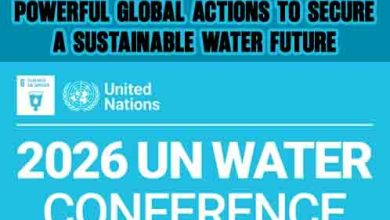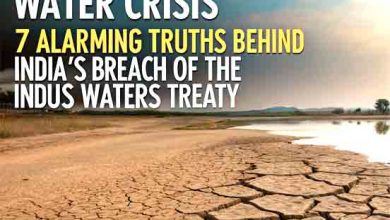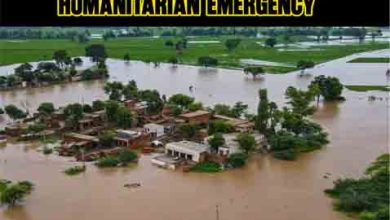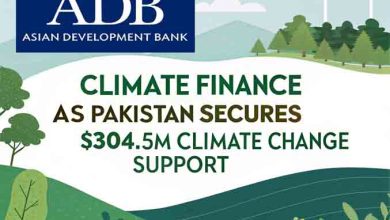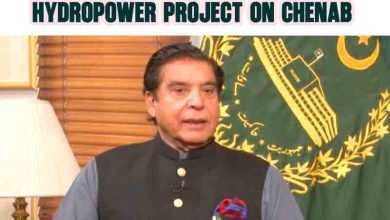Deadly Wake-Up Call: Climate Change Fuels Glacial Floods in Northern Pakistan
Unstable glaciers and rising temperatures are triggering dangerous floods in Gilgit-Baltistan. Discover how climate change fuels glacial floods in northern Pakistan and what's being done to stop them.
Climate change fuels glacial floods in northern Pakistan—a reality no longer confined to scientific projections. On a calm June morning, serenity shattered at Attabad Lake in Gilgit-Baltistan. Tourists capturing selfies near the iconic turquoise waters were blindsided by a powerful glacial outburst flood.
The Burundubar stream overflowed without warning, breaching the grounds of the luxurious Luxus Hotel, a renowned lakeside retreat. Chaos ensued.
“We saw the water rise and rushed to alert everyone. People were terrified. Some ran without shoes,” recalled Sajid Iqbal, a hotel staff member.
Evacuation was frantic. Rooms flooded. Vehicles swept. The very landscape that lured thousands became a danger zone.
A Warning Ignored: The GLOF Alert
Just hours earlier, the National Disaster Management Authority (NDMA) had issued a Glacial Lake Outburst Flood (GLOF) warning for Gilgit-Baltistan, citing intense heat, early monsoon activity, and westerly disturbances.
Unfortunately, alerts alone can’t halt disaster.
“We came for peace and ended up in a disaster,” said Fatima Sohail, a Karachi-based tourist. “You don’t expect the lake to turn on you.”
The suddenness of the flood underscores a terrifying new pattern—glacial systems destabilizing faster than ever due to global warming.
From Ice to Disaster: The Rapid Melting Crisis
“These events aren’t rare anymore—they’re regular,” warns Khadim Hussain, Director at the Gilgit-Baltistan Environmental Protection Agency (GBEPA).
Pakistan is home to more than 7,000 glaciers—the highest number outside the polar regions. A UNDP report estimates 3,000+ glacial lakes, with 33 labeled as dangerous, mainly in Gilgit-Baltistan and Khyber Pakhtunkhwa.
“In the past, snow arrived in November and melted slowly. Now it comes in late winter and vanishes instantly during heatwaves,” Hussain said.
Recent GLOF incidents in Skardu’s Barga Nallah damaged homes and crops. In Barga village, terrified locals brace for recurring floods. “We know it will happen again,” one farmer stated.
Unplanned Growth and Localized Pressures
While global emissions are a major driver, local actions worsen the risks.
“Deforestation, unregulated construction, and exploding tourism infrastructure accelerate glacier melt,” Hussain explained.
With minimal zoning laws, hotels and settlements are built dangerously close to glacial lakes and flood paths. Once floods hit, escape routes are nonexistent.
“Sometimes, all people hear is a cracking sound before the water barrels down,” noted an environmental expert.
Climate change fuels glacial floods in northern Pakistan not just through warming—but through human negligence.
A National Threat: Pakistan’s Water Lifeline at Risk
This isn’t a regional issue—it’s national. Gilgit-Baltistan’s glaciers feed 80% of Pakistan’s irrigation water via the Indus Basin.
If glacial loss continues:
- Pakistan risks severe water shortages.
- Agricultural output may decline drastically.
- Hydropower generation could be disrupted.
Pakistan is already among the world’s most climate-vulnerable countries, according to Germanwatch’s Climate Risk Index. The accelerating loss of glaciers could tip the country into a full-blown water crisis.
Policy Response: Budget 2025–26 Takes a Green Turn
Recognizing the urgency, Pakistan’s federal budget for 2025–26 introduced significant climate resilience measures:
- 8.2% of development budget and 6.9% of current budget allocated to climate-related efforts.
- A carbon levy of Rs2.5/liter on petrol, diesel, and furnace oil (doubling next year).
- Rs 85.43 billion for adaptation and resilience (e.g., early warning systems, climate-smart villages).
- Rs 603 billion toward clean energy initiatives like solar and hydropower.
- Rs 28.33 billion for climate research and education.
- Revitalization of the Green Pakistan Programme for reforestation and ecosystem restoration.
“It’s the most comprehensive climate allocation in our history,” said a Planning Commission spokesperson.
While promising, implementation will be key. Without accountability, the cycle of reactive disaster response will continue.
Hope and Action: The Road Ahead
Some rays of hope are visible. Community-led glacier watch groups in Hunza and Ghizer valleys now monitor unstable lakes. Schoolchildren in Gilgit are being taught early evacuation drills. NGOs like ICIMOD and AKAH-Pakistan are mapping glacial terrain and training emergency responders.
But these efforts need scale—and speed.
“We’re out of time for debate,” an environmentalist from Skardu emphasized. “Glaciers are melting while we wait.”
External Resources
- UNDP Pakistan – Climate Resilience
- ICIMOD – Hindu Kush Himalaya Climate Updates
- NDMA GLOF-II Program
Internal Links
- Pakistan’s Budget 2025–26: Climate and Energy Highlights
- Green Pakistan Programme: Reforesting the Future
- Climate Crisis in Gilgit-Baltistan: What’s Next?
Conclusion: Resilience Starts Now
Climate change fuels glacial floods in northern Pakistan—and it’s happening now, not decades later. From hotel evacuations in Attabad to submerged crops in Barga, the human and economic costs are mounting.
Pakistan’s glaciers are shrinking, and the time for reactive policies is over. The 2025–26 budget shows promise, but action—not allocation—is what matters now.
The choice is clear: Either continue treating every flood as an isolated tragedy or adopt a unified, science-backed, and community-led strategy to protect the lives—and the water—of the nation.



